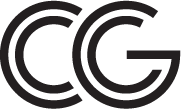Restrictive Lung Disease
What is it?
There are over 200 Restrictive Lung Diseases (RLD), grouped by performance on pulmonary function tests. With RLD, there is a reduction in lung compliance due to fibrotic changes causing less air to be inhaled. This impairs the volume of air the lungs can hold and use. People with RLD may complain of air hunger, coughing, chest pain, and fast shallow breaths. Due to reduced ventilation, people with RLD struggle to get enough oxygen to the cells causing fatigue, particularly with activity. This can cause anxiety with exercise and can contribute to a sedentary lifestyle which can cause deconditioning. 1,2,3
What causes it?
Either intrinsic or extrinsic factors can cause restrictive lung disease. Intrinsic causes can be due to inflammation from conditions such as sarcoidosis or exposure to allergens and dust such as asbestosis, silica, coal, and fungi. This inflammation causes scarring and fibrosis of the lung tissue. These scars restrict lung expansion and reduce respiration. Extrinsic causes of RLD in the lung include deformities such as kyphoscoliosis or obesity. Injuries to muscles breathing in ALS or muscular dystrophy can also impair breathing. 1,2
Risk factors
Increasing age, genetics, gender, environmental exposure to dust, obesity, and smoking.
Treatments:
Medications:
Corticosteroids, anti-fibrotics, vasodilators, immunosuppressants, and oxygen. 3
Weight loss
For obese patients, weight loss can reduce the required work of breathing. Diet and exercise are the first lines of treatment, however, gastric bypass surgery has been shown to improve lung function tests.
Surgery
Scoliosis can be managed with bracing and physical therapy. However, some cases may require surgical correction.
Lung transplantations should be considered for candidates with respiratory failure.
Positioning
Laying on your stomach can improve oxygenation in ARDs. 3
Pulmonary Rehabilitation
Pulmonary rehab can improve walking distance, reduce fatigue and trouble breathing, and improve quality of life. Pulmonary rehab should be tailored to each person by a multi-disciplinary team considering their fitness, disease process, and goals. Breathing exercises, strengthening the upper and lower body with weights, and aerobic exercise to improve lung and physical function. Relearning how to use the diaphragm can help increase the efficiency of breathing. Being sedentary can contribute to losses of muscle strength and endurance, as well as a reduction in vo2 max.
Education, nutrition, and psychological support are also integral to the success of pulmonary rehab. 3,5,6
MY KEY LINKS:
- 💡 YouTube – https://www.youtube.com/@cartergansky
- 📸 Instagram – https://www.instagram.com/carter.r.gansky/
- 🐦 Twitter – https://twitter.com/CarterGansky
- 🌲 Linktree – https://linktr.ee/cartergansky
- 🔊 Discord – https://discord.gg/sQxvHH78Ga
WHO AM I:
I’m Carter Gansky, a fitness and health advocate and a Doctor of Physical Therapy in training. I explore the strategies and tools that help us live motivating, healthier, and more fulfilling lives.
GET IN TOUCH:
🧠 contactcartergansky@gmail.com
For collaborations or other business inquiries.
Disclaimer: This content is for educational purposes only and does not constitute the practice of physical therapy, nursing, or other professional health care services, including the giving of medical advice, and no doctor/patient relationship is formed. Using information or materials for any reason is at the user’s own risk. This content is not intended to be a substitute for professional medical advice, diagnosis, or treatment. Users should not disregard or delay in obtaining medical advice for any medical condition they may have and should seek the assistance of their healthcare professionals for any such conditions.
References
- Martinez-Pitre, P. J., Sabbula, B. R., & Cascella, M. (2024). Restrictive Lung Disease. In StatPearls. StatPearls Publishing. http://www.ncbi.nlm.nih.gov/books/NBK560880/
- Sarcoidosis—Symptoms | NHLBI, NIH. (2022, March 24). https://www.nhlbi.nih.gov/health/sarcoidosis/symptoms
- DeTurk, W. E. (2018). Cardiovascular and Pulmonary Physical Therapy: An Evidence-Based Approach (3rd edition). McGraw-Hill Medical.
- Naji, N. A., Connor, M. C., Donnelly, S. C., & McDonnell, T. J. (2006). Effectiveness of pulmonary rehabilitation in restrictive lung disease. Journal of Cardiopulmonary Rehabilitation, 26(4), 237–243. https://doi.org/10.1097/00008483-200607000-00007
- Sanchez-Ramirez, D. C. (2022). Impact of Pulmonary Rehabilitation Services in Patients with Different Lung Diseases. Journal of Clinical Medicine, 11(2), 407. https://doi.org/10.3390/jcm11020407
- Markovitz, G. H., & Cooper, C. B. (2010). Rehabilitation in non-COPD: Mechanisms of exercise limitation and pulmonary rehabilitation for patients with pulmonary fibrosis/restrictive lung disease. Chronic Respiratory Disease, 7(1), 47–60. https://doi.org/10.1177/1479972309348654



